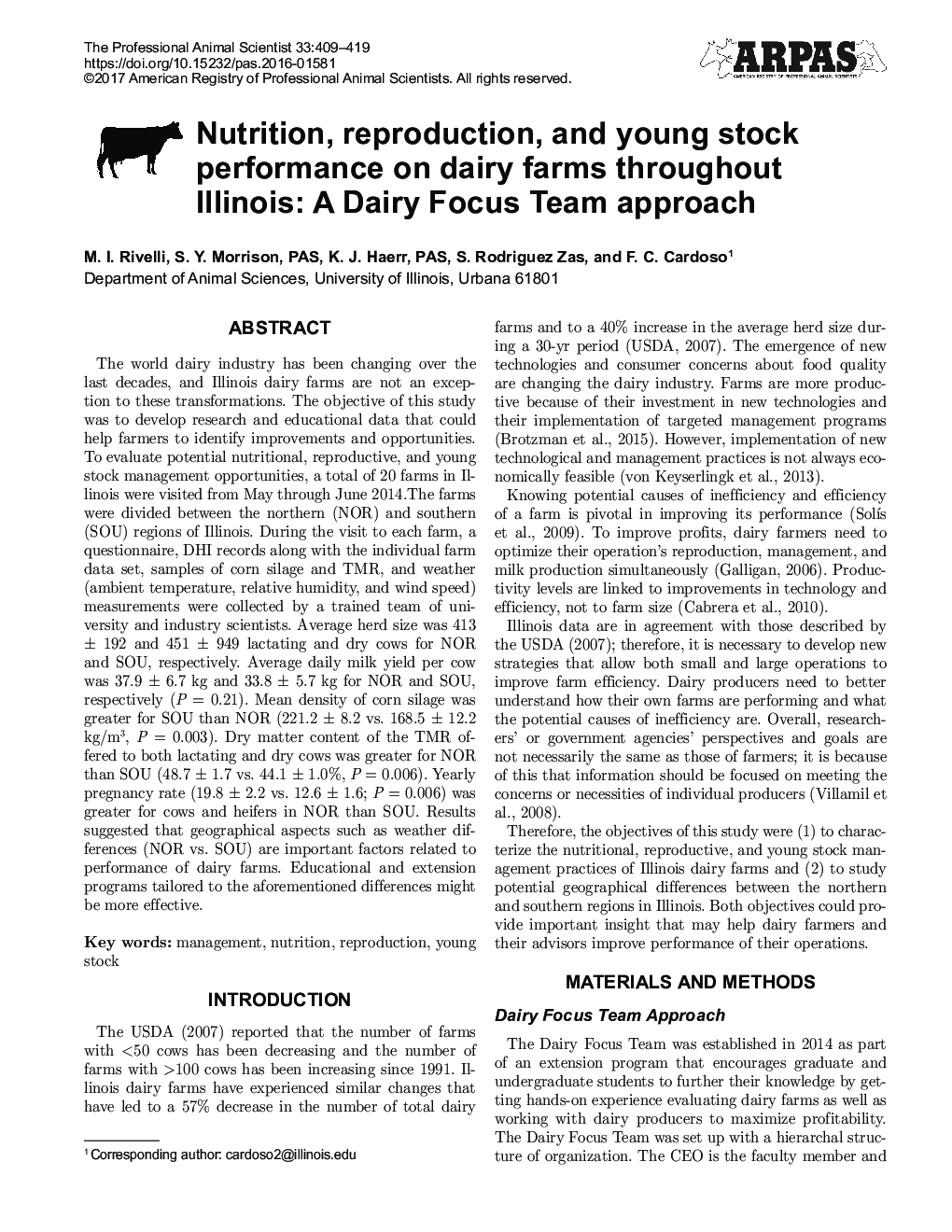| Article ID | Journal | Published Year | Pages | File Type |
|---|---|---|---|---|
| 8503736 | The Professional Animal Scientist | 2017 | 11 Pages |
Abstract
The world dairy industry has been changing over the last decades, and Illinois dairy farms are not an exception to these transformations. The objective of this study was to develop research and educational data that could help farmers to identify improvements and opportunities. To evaluate potential nutritional, reproductive, and young stock management opportunities, a total of 20 farms in Illinois were visited from May through June 2014.The farms were divided between the northern (NOR) and southern (SOU) regions of Illinois. During the visit to each farm, a questionnaire, DHI records along with the individual farm data set, samples of corn silage and TMR, and weather (ambient temperature, relative humidity, and wind speed) measurements were collected by a trained team of university and industry scientists. Average herd size was 413 ± 192 and 451 ± 949 lactating and dry cows for NOR and SOU, respectively. Average daily milk yield per cow was 37.9 ± 6.7 kg and 33.8 ± 5.7 kg for NOR and SOU, respectively (P = 0.21). Mean density of corn silage was greater for SOU than NOR (221.2 ± 8.2 vs. 168.5 ± 12.2 kg/m3, P = 0.003). Dry matter content of the TMR offered to both lactating and dry cows was greater for NOR than SOU (48.7 ± 1.7 vs. 44.1 ± 1.0%, P = 0.006). Yearly pregnancy rate (19.8 ± 2.2 vs. 12.6 ± 1.6; P = 0.006) was greater for cows and heifers in NOR than SOU. Results suggested that geographical aspects such as weather differences (NOR vs. SOU) are important factors related to performance of dairy farms. Educational and extension programs tailored to the aforementioned differences might be more effective.
Keywords
Related Topics
Life Sciences
Agricultural and Biological Sciences
Animal Science and Zoology
Authors
M.I. Rivelli, S.Y. PAS, K.J. PAS, S. Rodriguez Zas, F.C. Cardoso,
